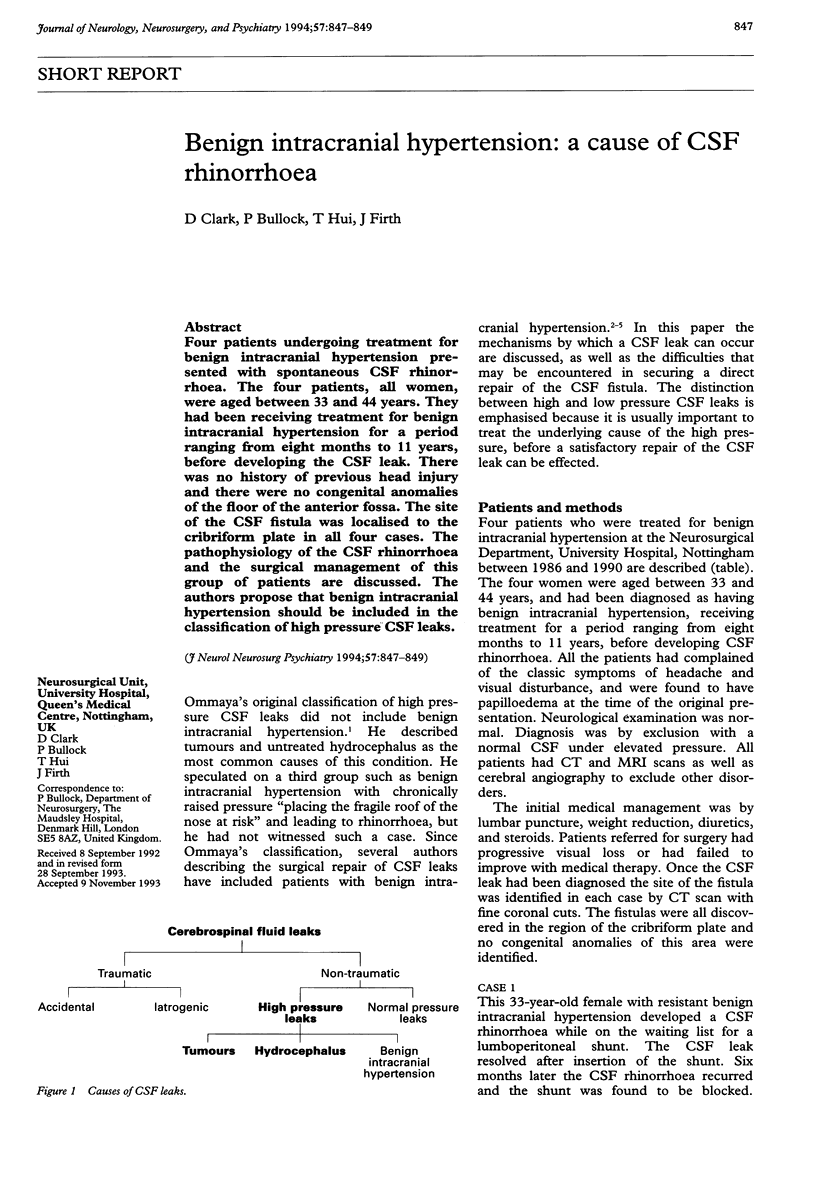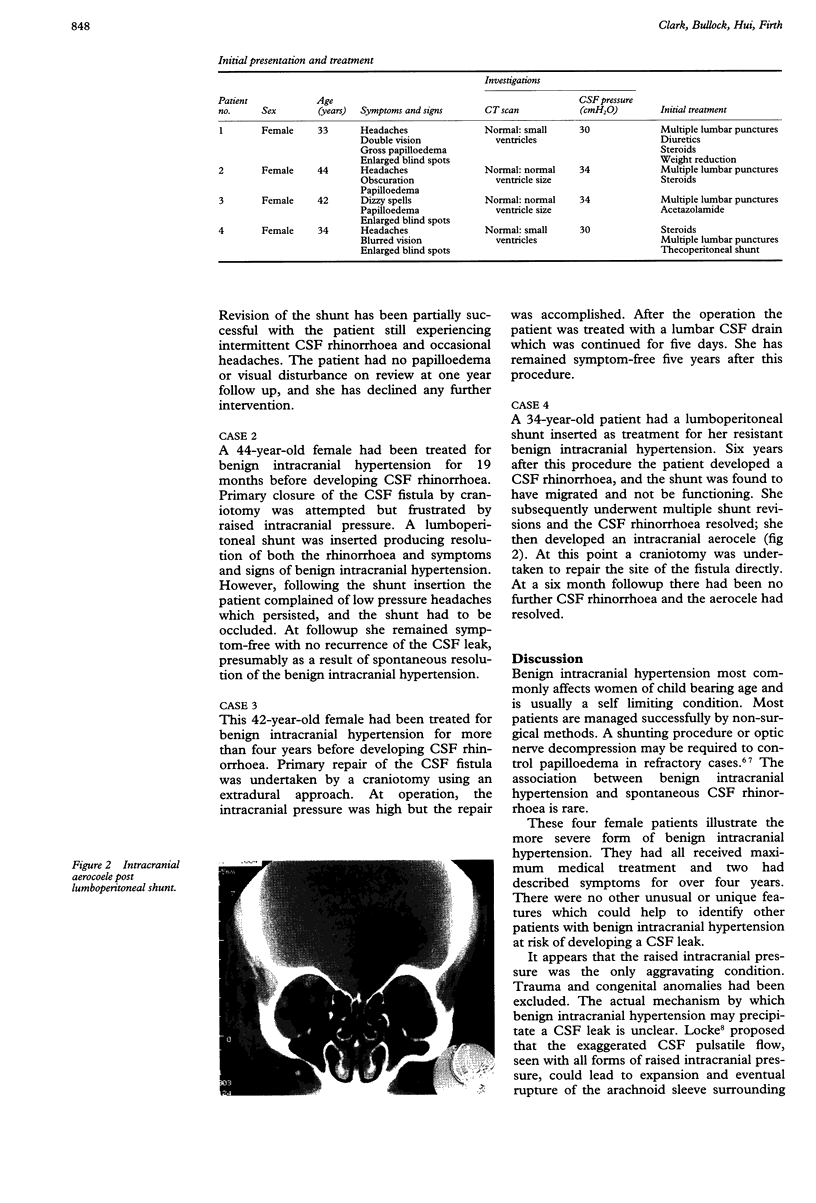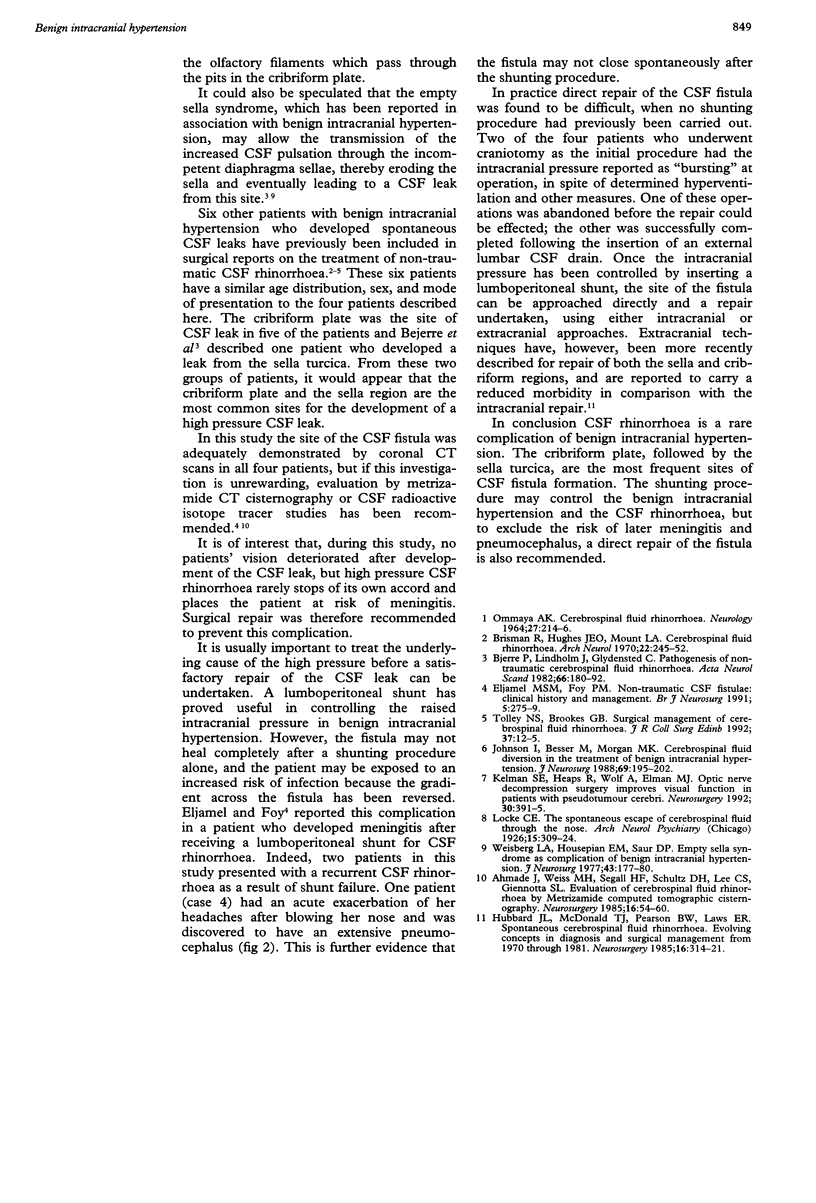Abstract
Four patients undergoing treatment for benign intracranial hypertension presented with spontaneous CSF rhinorrhoea. The four patients, all women, were aged between 33 and 44 years. They had been receiving treatment for benign intracranial hypertension for a period ranging from eight months to 11 years, before developing the CSF leak. There was no history of previous head injury and there were no congenital anomalies of the floor of the anterior fossa. The site of the CSF fistula was localised to the cribriform plate in all four cases. The pathophysiology of the CSF rhinorrhoea and the surgical management of this group of patients are discussed. The authors propose that benign intracranial hypertension should be included in the classification of high pressure CSF leaks.
Full text
PDF


Images in this article
Selected References
These references are in PubMed. This may not be the complete list of references from this article.
- Ahmadi J., Weiss M. H., Segall H. D., Schultz D. H., Zee C. S., Giannotta S. L. Evaluation of cerebrospinal fluid rhinorrhea by metrizamide computed tomographic cisternography. Neurosurgery. 1985 Jan;16(1):54–60. [PubMed] [Google Scholar]
- Bjerre P., Lindholm J., Gyldensted C. Pathogenesis of non-traumatic cerebrospinal fluid rhinorrhea. Acta Neurol Scand. 1982 Aug;66(2):180–190. doi: 10.1111/j.1600-0404.1982.tb04515.x. [DOI] [PubMed] [Google Scholar]
- Brisman R., Hughes J. E., Mount L. A. Cerebrospinal fluid rhinorrhea. Arch Neurol. 1970 Mar;22(3):245–252. doi: 10.1001/archneur.1970.00480210055007. [DOI] [PubMed] [Google Scholar]
- Eljamel M. S., Foy P. M. Non-traumatic CSF fistulae: clinical history and management. Br J Neurosurg. 1991;5(3):275–279. doi: 10.3109/02688699109005187. [DOI] [PubMed] [Google Scholar]
- Hubbard J. L., McDonald T. J., Pearson B. W., Laws E. R., Jr Spontaneous cerebrospinal fluid rhinorrhea: evolving concepts in diagnosis and surgical management based on the Mayo Clinic experience from 1970 through 1981. Neurosurgery. 1985 Mar;16(3):314–321. doi: 10.1227/00006123-198503000-00006. [DOI] [PubMed] [Google Scholar]
- Johnston I., Besser M., Morgan M. K. Cerebrospinal fluid diversion in the treatment of benign intracranial hypertension. J Neurosurg. 1988 Aug;69(2):195–202. doi: 10.3171/jns.1988.69.2.0195. [DOI] [PubMed] [Google Scholar]
- Kelman S. E., Heaps R., Wolf A., Elman M. J. Optic nerve decompression surgery improves visual function in patients with pseudotumor cerebri. Neurosurgery. 1992 Mar;30(3):391–395. doi: 10.1227/00006123-199203000-00013. [DOI] [PubMed] [Google Scholar]
- Tolley N. S., Brookes G. B. Surgical management of cerebrospinal fluid rhinorrhoea. J R Coll Surg Edinb. 1992 Feb;37(1):12–15. [PubMed] [Google Scholar]
- Weisberg L. A., Housepian E. M., Saur D. P. Empty sella syndrome as complication of benign intracranial hypertension. J Neurosurg. 1975 Aug;43(2):177–180. doi: 10.3171/jns.1975.43.2.0177. [DOI] [PubMed] [Google Scholar]



